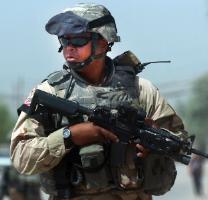For the past several years, the widely accepted view among defense analysts had been that counterinsurgency, or COIN, represented the future of U.S. defense planning and operations. This consensus was initially driven by the belief that “effective COIN” had “won” the Iraq War, and later by the need, as former Defense Secretary Robert Gates put it, to fight “the wars we’re in.”
Now things have become far less clear. Awareness has set in that the effects of the 2007-2008 “surge” in Iraq were only partial and, even at the time, only partly achieved by the shift toward conducting what we know as “counterinsurgency.” And most now acknowledge that the “Afghan surge” has not had a similar effect as its Iraqi predecessor.
But if COIN is no longer considered the future of U.S. military operations, what definitive lessons, if any, have we learned from its decade of prominence?

